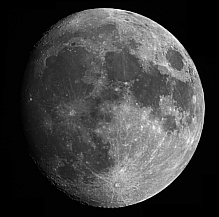After the disappointment of being unable to observe the Leonid meteor shower earlier in the week due to rain and cloud, things were looking up (pardon the pun) for the alpha-Monocerotid shower on Friday night. The day had been cold and clear, and what wind there was had turned to a gentle breeze by 21:00.
I decided to make do without the hassle of setting up the mount, and made do with a static setup with the D50 on a fixed tripod, taking a variety of exposure-sets across a range of focal lengths. The MaxIm DL5 software on the lappy controlled the camera and downloaded the pics while I sat next to the tripod and watched events the good old-fashioned way. The only problems encountered were due to the cold, at -3C the D50's batteries don't perform well, only lasting for 200 shots before they needed to be warmed up or recharged. Having a couple of spare batteries is a godsend for such conditions. The cold didn't affect me, though - I was wrapped up in my Alpkit Filo, astrobreeks and Skee-Tex Original boots, nice and comfy.
The session began at about 22:00 and during the next four hours I observed 12 meteor trails (10 alpha-Monocerotids and 2 sporadics), of which 9 were fully or partly within the field of view of the camera, which took a grand total of 412 pictures.
At about 02:00 the clouds rolled in and ended the session. After clearing away the kit, I went through all of the photos, and guess what... there's not even the slightest sign of any meteor trails on any of them, despite cranking up the enhancement levels to ridiculous levels! Typical.
So, I'm sorry, but there's no nice photo of the event to show to you. As a last resort, before binning all of the pics, I dubbed 77 of the 30-second frames together to make a small video showing Gemini rising, a few jet-tracks and the clouds that ended observations:





